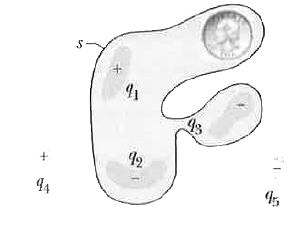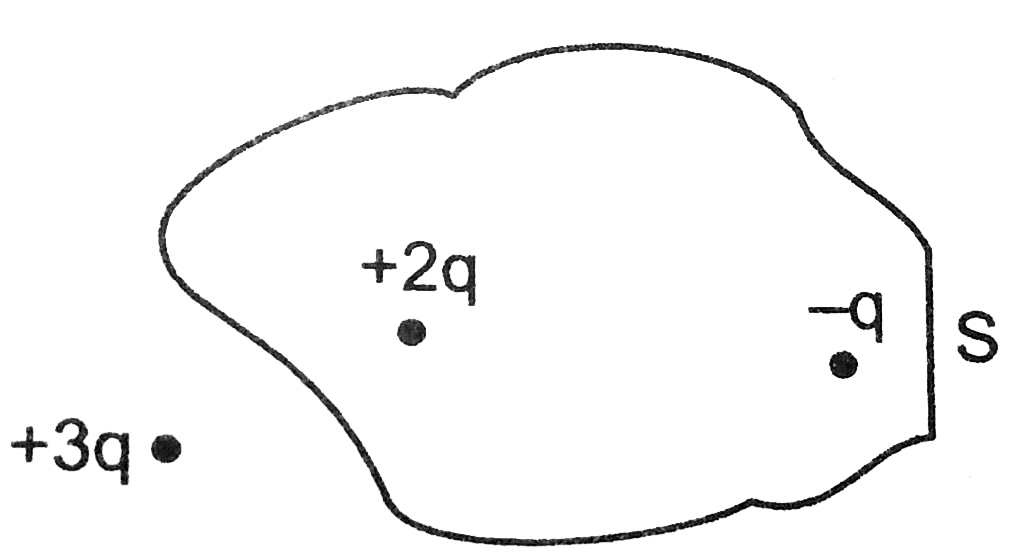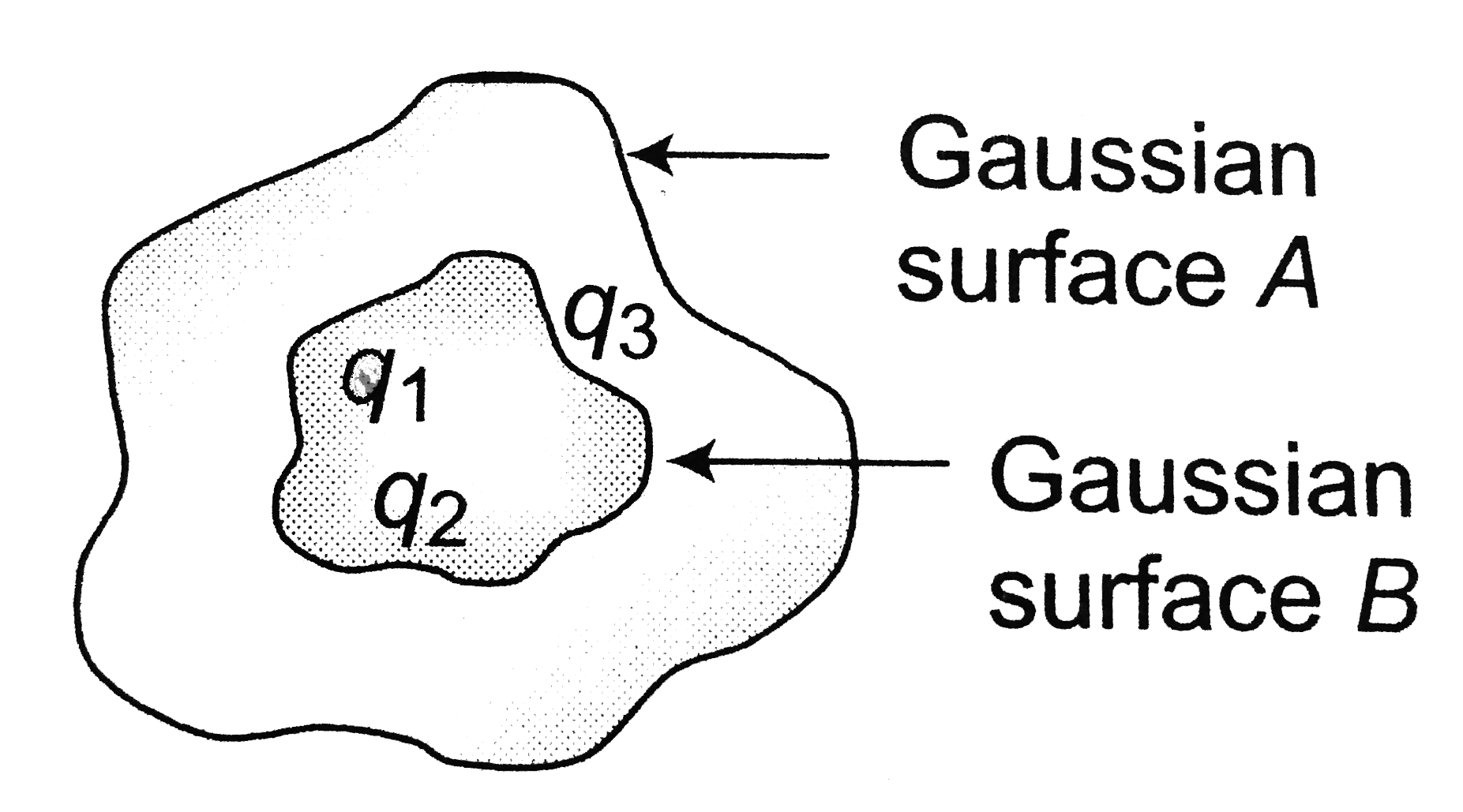shows five charged lumps of plastic and an electrically neutral coin. The cross sectio of a Gaussian surface S is indicated. What is the net electric flux through the surface if q1=q4+3.1nC,q2=q5=−5.9nCandq3=−3.1nC ?

Five plastic objects,each with an electric charge, and a coin, which has no net charge, A Gaussian surface, shown in cross section, encloses three of the plastic objects and the coin.
Text Solution
The con does not contribute the ϕ because it is negative charge. Charges q4andq5 do not contribute because they are outside surface S. Thus, q≠c is q1+q2+q3 and Eq. gives us
ϕqencε0=q1+q2+q3ε0
=+3.1×10−9C−5.9×10−9C−3.1×10−9C8.85×10−12C2/N.m2
=−670N.m2/C
The minus sign shows that the net flux through the surface is inward and thus that the net charge within the surface is negative.
|
Updated on:21/07/2023
Topper's Solved these Questions
- BOOK - RESNICK AND HALLIDAYCHAPTER - GAUSS' LAW EXERCISE - CHECKPOINT7videos
GAUSS' LAW
- BOOK - RESNICK AND HALLIDAYCHAPTER - GAUSS' LAW EXERCISE - PROBLEMS42videos
GAUSS' LAW
- BOOK - RESNICK AND HALLIDAYCHAPTER - FORCE AND MOTION-IIEXERCISE - PRACTICE QUESTIONS (Integer Type)1videos
FORCE AND MOTION-II
- BOOK - RESNICK AND HALLIDAYCHAPTER - GEOMETRICAL OPTICS : REFLECTION EXERCISE - PRACTICE QUESTIONS (Integer Type)3videos
GEOMETRICAL OPTICS : REFLECTION
Similar Questions
Knowledge Check
- Question 1 - Select One
A point charge 4μC is at the centre of a cubic Gaussian surface 10 cm on edge. Net electric flux through the surface is
A2.5×105Nm2C−1B4.5×105Nm2C−1C4.5×106Nm2C−1D2.5×106Nm2C−1 - Question 2 - Select One
A point charge 4μC is at the centre of a cubic Gaussian surface 10 cm on edge. Net electric flux through the surface is
A2.5×105Nm2C−1B4.5×105Nm2C−1C4.5×106Nm2C−1D2.5×106Nm2C−1 - Question 3 - Select One
A point charge of 1.77 μC is at the centre of a cubical gaussian surface having each side 50 cm. what is the net electric flux through the surface?
A105Nm2C−1B1.5×105Nm2C−1C2×105Nm2C−1D2.5×105Nm2C−1
A point charges of 2.0μC is at the centre of a cubic Gaussian surface 9.0cm on edge . What is the net electric flux through the surface?
View SolutionIf the radius of the Gaussion surface enclosing a charge q is halved, how does the electric flux through the Gaussion surface change?
View SolutionThe electric flux through a Gaussian surface that encloses three charges given by q1=−14nC,q2=78.85nC,q3=−56nC
View SolutionFig shows three point charges +2q,−qand+3q, What is the electric flux due to this configuration through the surface S ?
 View Solution
View SolutionThe electric flux for Gaussian surface A that enclose the charge particles in free space is (given q1=−14nC,q2=78.85nC,q3=−56nC)
 View Solution
View Solution

